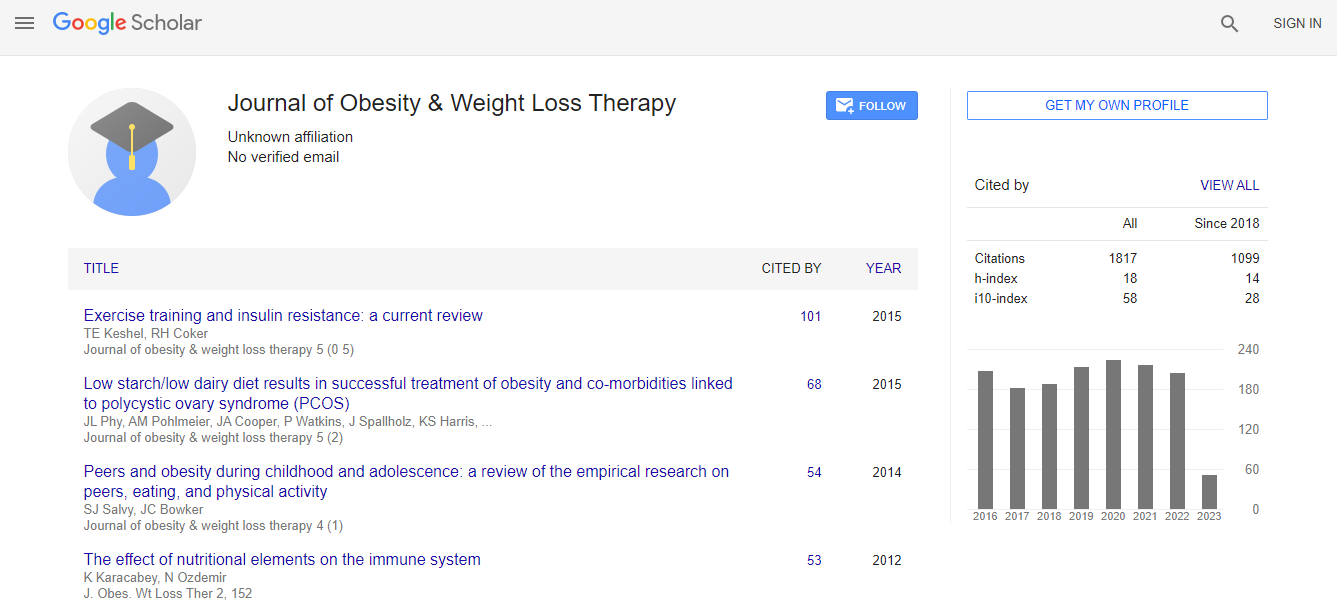Our Group organises 3000+ Global Events every year across USA, Europe & Asia with support from 1000 more scientific Societies and Publishes 700+ ������ Journals which contains over 50000 eminent personalities, reputed scientists as editorial board members.
������ Journals gaining more Readers and Citations
700 Journals and 15,000,000 Readers Each Journal is getting 25,000+ Readers
Citations : 2305
Indexed In
- Index Copernicus
- Google Scholar
- Open J Gate
- Genamics JournalSeek
- Centre for Agriculture and Biosciences International (CABI)
- RefSeek
- Hamdard University
- EBSCO A-Z
- OCLC- WorldCat
- SWB online catalog
- CABI full text
- Cab direct
- Publons
- Geneva Foundation for Medical Education and Research
- Euro Pub
- University of Bristol
- Pubmed
- ICMJE
Useful Links
Recommended Journals
Related Subjects
Share This Page
Determinants of diabetic retinopathy in Tikur Anbessa Hospital, Ethiopia: a case-control study
6th World Congress on DIABETES AND OBESITY
Kalid Seid, Temamen Tesfaye, Admasu Belay and Hayat Mohammed
Mizan-Tepi University, Ethiopia
ScientificTracks Abstracts: J Obes Weight Loss Ther
Abstract
Background: Diabetic retinopathy is the most frequent complication of Diabetes Mellitus and remains the leading cause of preventable blindness. However, there are limited studies on the determinants of diabetic retinopathy in the study area as well in Ethiopia. Hence, this study aimed to assess the determinants of diabetic retinopathy among diabetic patients at Tikur Anbessa Hospital. Methods: An institution-based unmatched caseâ�?�?control study design was conducted at Tikur Anbessa Hospital from May 11 to June 26, 2020. Diabetic patients who developed retinopathy within 2 years were cases in the study. Patients who were free of retinopathy were controls in this study. Data were collected using a pretested interviewer administered questionnaire, Topcon retinal examination, and a record review. The collected data were entered into Epi Data version 3.1 software, and analyzed using SPSS version 25. Binary logistic regression analysis was used to assess the determinants of diabetic retinopathy. Results: A total of 282 patients (142 cases and 140 controls) were included in the study. The mean age (�?± Standard deviation) for the cases and the controls were 50.6 (SD: �?± 18.7) and 44.9 (SD: �?± 17.65) respectively. Patients who had a glucometer at home (AOR = 0.048; 95% CI: 0.005â�?�?0.492), exercise adherence (AOR = 0.075; 95% CI: 0.007â�?�?0.84), diabetes duration < 5 years (AOR = 0.005; 95% CI: 0.00â�?�?0.10) and 5â�?�?10 years (AOR = 0.041; 95% CI: 0.003â�?�?0.57), health information on diabetic complications (AOR = 0.002; 95% CI: 0.00â�?�?0.042) and appointments every month (AOR = 0.004; 95% CI: 0.00â�?�?0.073) and every 3 months (AOR = 0.022; 95% CI: 0.002â�?�?0.23) were less likely to develop diabetic retinopathy. Participants who had poor glycemic control (AOR = 19.9; 95% CI: 2.34â�?�?168.69), systolic hypertension (AOR = 23.4; 95% CI: 2.56â�?�?215.36) and nephropathy (AOR = 17.85; 95% CI: 2.01â�?�?158.1), had a higher risk of developing diabetic retinopathy. Conclusions: Patients who had a glucometer at home, exercise adherence, diabetes duration < 10 years, health information on diabetic complications, and frequent follow-up had a preventive role. However, poor glycemic control, systolic hypertension, and nephropathy increase the risk of diabetic retinopathy. A concerted effort should be made to improve the health status of patients with Diabetes Mellitus, with particular emphasis on lifestyle modification practices to prevent diabetic retinopathy. Keywords: Diabetic retinopathy, Determinants, Caseâ�?�?control, Ethiopia Recent Publications 1. Seid K, Tesfaye T, Belay A, Mohammed H. Determinants of diabetic retinopathy in Tikur Anbessa Hospital, Ethiopia: a casecontrol study. Clinical Diabetes and Endocrinology. 2021 Dec; 7(1): 1-9. 2. Gube AA, Debalkie M, Seid K, Bisete K, Mengesha A, Zeynu A, Shimelis F, Gebremeskel F. Assessment of anti-TB drug nonadherence and associated factors among TB patients attending TB clinics in Arba Minch Governmental Health Institutions, Southern Ethiopia. Tuberculosis research and treatment. 2018 Feb 18; 2018.Biography
I am expertise in adult health nursing basically non-communicable diseases in sub-Saharan country, Ethiopia. I have different papers in review process concerning diabetes self-care practices and its association with COVID-19 in Ethiopia. I have built models for nursing practice in southwest Ethiopia after years of experience in research, evaluation, teaching and administration both in hospital and education institutions.

